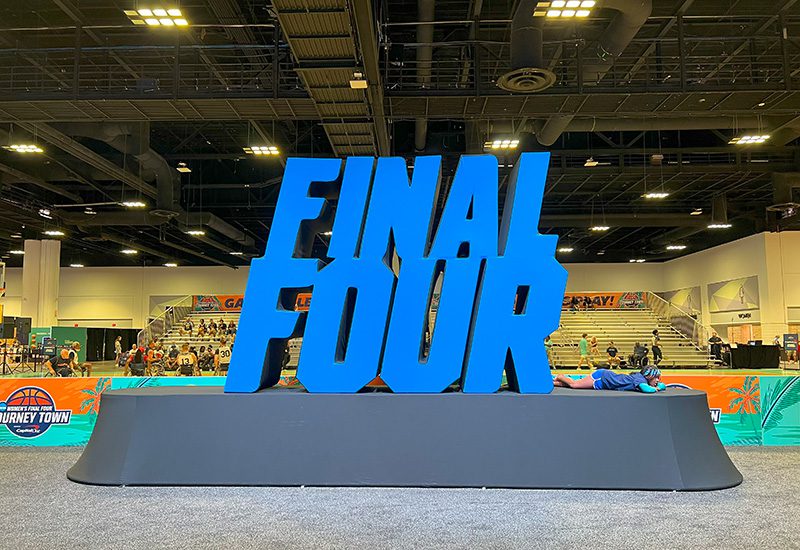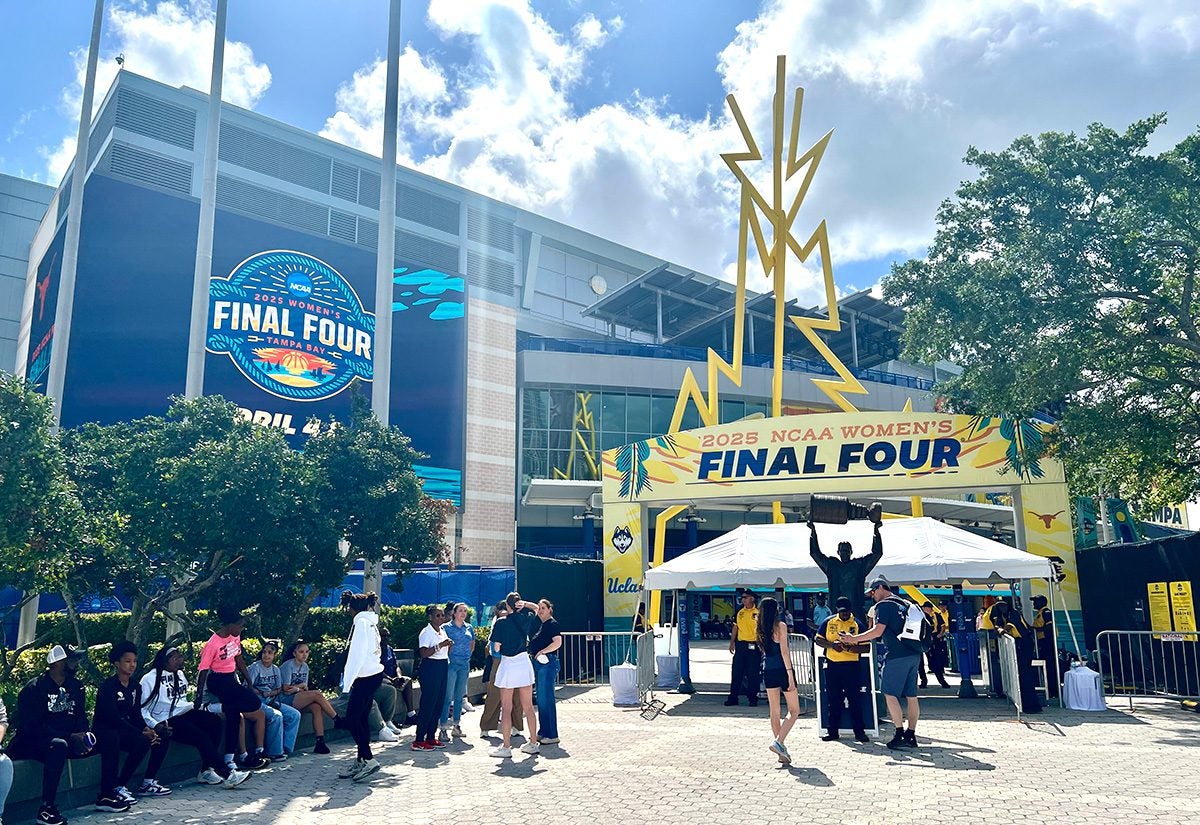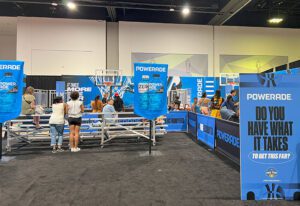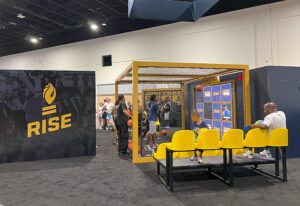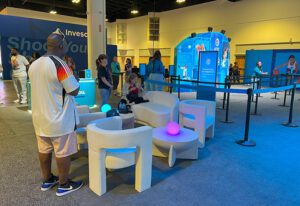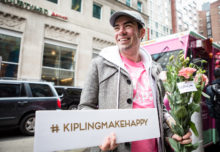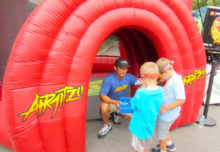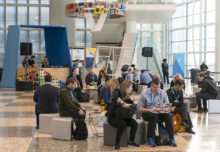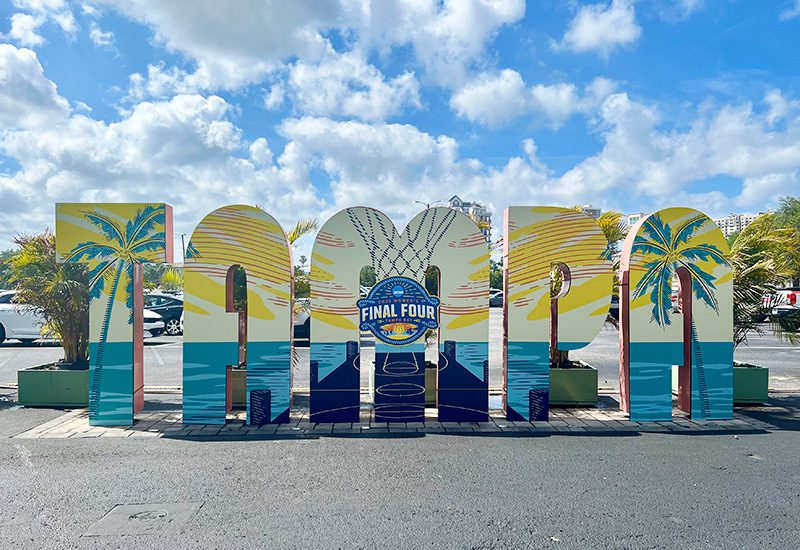 Sunday’s NCAA Women’s Basketball National Championship game between UConn and South Carolina drew a sellout crowd of 19,777 at Amalie Arena in Tampa, FL, and 8.5 million viewers, making it the third most-watched women’s Division I title game on ESPN platforms. In the days leading up to UConn’s 12th national championship win, tens of thousands of fans showed out in downtown Tampa for the week’s Final Four celebrations and events, with many setting record attendance numbers and reaching maximum capacity.
Sunday’s NCAA Women’s Basketball National Championship game between UConn and South Carolina drew a sellout crowd of 19,777 at Amalie Arena in Tampa, FL, and 8.5 million viewers, making it the third most-watched women’s Division I title game on ESPN platforms. In the days leading up to UConn’s 12th national championship win, tens of thousands of fans showed out in downtown Tampa for the week’s Final Four celebrations and events, with many setting record attendance numbers and reaching maximum capacity.
The Tampa Convention Center welcomed 22,241 fans from April 3-6 for the Women’s Final Four fan festival, Tourney Town presented by Capital One, and Saturday marked the highest single-day attendance since 2018. These stats and the momentum built around last year’s “Caitlin Clark effect” show that the fandom around women’s college basketball continues to grow, and brands are responding. They’re getting creative with their sponsorships and on-site activations to tap into a diverse fanbase made up of families with young basketball players, Gen Z college students and devoted alumni who fly in to watch their team play.
While we were in Tampa, which was completely decked out in Final Four signage, we heard locals comment on how they happened upon the tournament events or just came out for a good time. Many stated they “had no idea this was a thing” and were surprised by the scale of the experiences available. Still, there were plenty of fans who were buzzing and proudly sporting UConn, South Carolina, UCLA and Texas gear, and kids and adults alike were beaming at the chance to show off their basketball skills at the countless challenges around Tourney Town.
So, how did brands appeal to the wide spectrum of attendees and stand out among a sea of basketball courts and hoops games? We break down six experiential tactics we spotted around town that successfully pulled fans in.
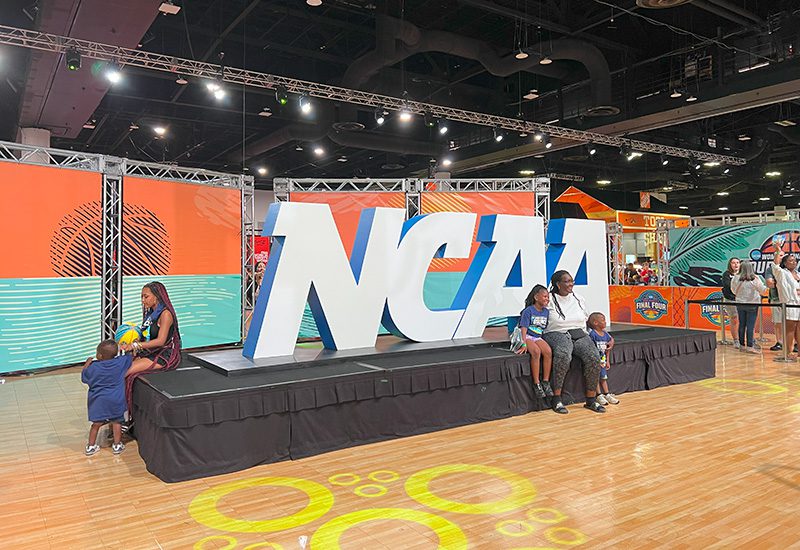
Bucket Hats FTW
Everywhere we looked, bucket hats were the accessory of choice, specifically branded ones. Capital One, GEICO and The Home Depot were among the booths that gave away bucket hats as prizes for taking part in their basketball-themed games, and they became a kind of badge of honor that identified wearers as high points scorers. It was easy to pick out where the hats came from, thanks to their iconic colors (orange for The Home Depot) and designs (an allover print of the GEICO Gecko holding a basketball), and fans took note, pinpointing the booths to get their hands on the hot items.
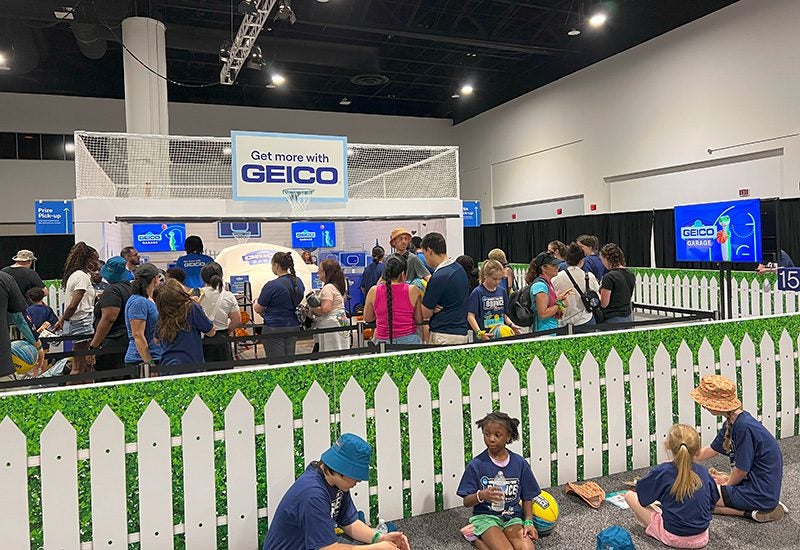
The Nostalgia Play
While bucket hats were an iconic look from the ’90s and early 2000s, they’re trendy once again among millennials, Gen Z and Gen Alpha, and ESPN leaned into the nostalgia with its activation. The ESPN Boardwalk brought ’90s vibes to life with a custom airbrushing station, graffiti designs, a boombox and an installation of stacked retro TVs. Add in a hip-hop soundtrack, and fans couldn’t help but be drawn in.
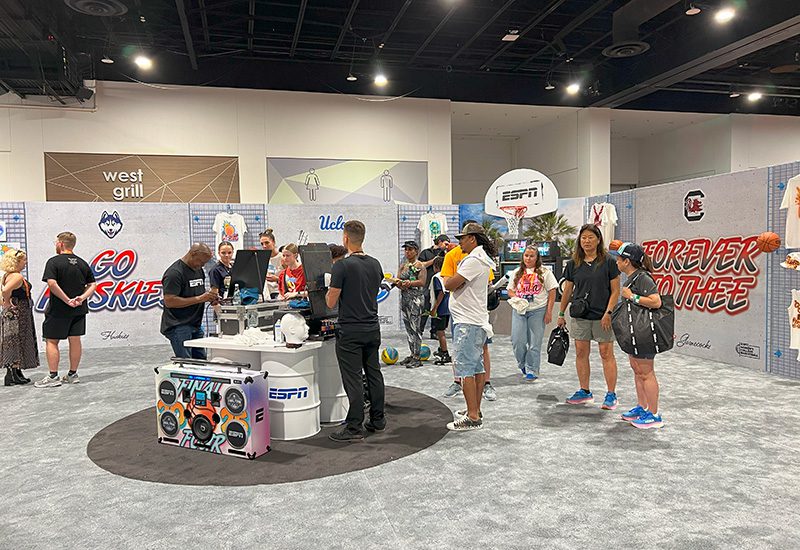
Technology Upgrades
On the flip side, some brands went all in on the latest technological innovations, incorporating them into their footprints to create an elevated experience. Invesco QQQ powered its Innovation Arena with AI, AR, motion tracking and cloud computing to put fans in the center of the March Madness action. AT&T invited fans to design their dream courts on a tablet, which then became a reality on a basketball court made up of giant interactive screens. And Coca-Cola gave fans the chance to play their team’s fight song by singing, high-fiving and dancing on a larger-than-life soundboard equipped with buttons, lights and screens.
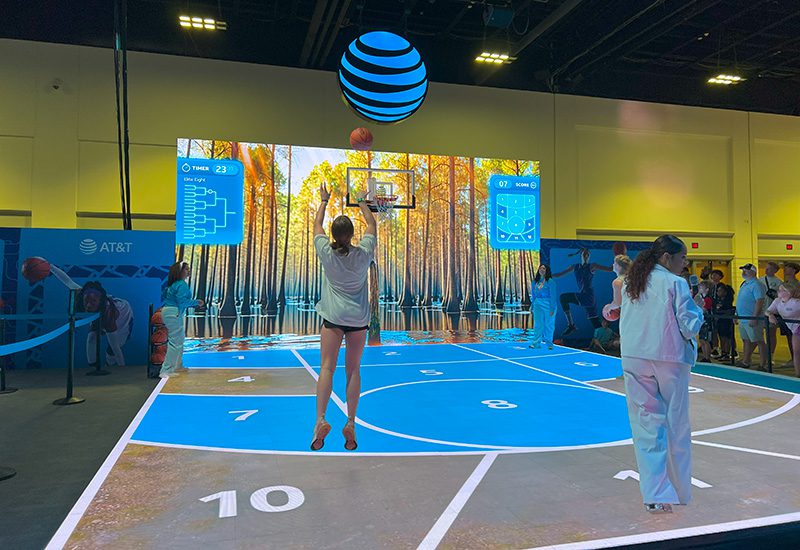
Spectator Areas
Not everyone wants to get in the game, so for attendees who preferred to observe the action or watch friends and family members take their turn shooting baskets or competing in head-to-head challenges, seating arrangements like bleachers, stools and couches were available at the Coca-Cola, Powerade, RISE and AT&T booths. They also provided participants with a rest area post-game if things got intense.
Star Brand Ambassadors
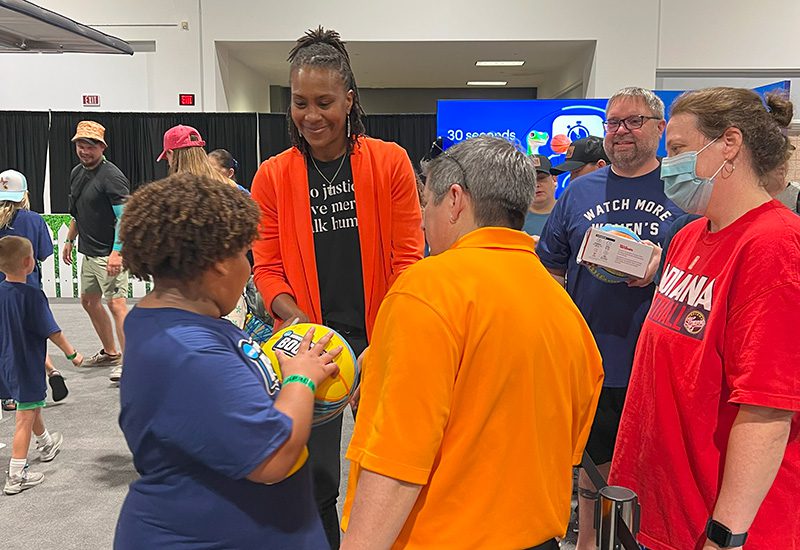 Brands brought in WNBA and NBA players and legends to meet fans throughout the weekend, and some took it a step further by integrating them into the actual design of their footprints. Capital One’s Ice Kareem Truck, named after Kareem Abdul-Jabbar, offered scoops of specialty ice cream flavors, and the brand also turned Charles Barkley and Magic Johnson into digital blimps that fans propelled across a virtual sky by making baskets.
Brands brought in WNBA and NBA players and legends to meet fans throughout the weekend, and some took it a step further by integrating them into the actual design of their footprints. Capital One’s Ice Kareem Truck, named after Kareem Abdul-Jabbar, offered scoops of specialty ice cream flavors, and the brand also turned Charles Barkley and Magic Johnson into digital blimps that fans propelled across a virtual sky by making baskets.
At the GEICO Garage, we caught up with Tamika Catchings, former Indiana Fever player and Women’s Basketball Hall of Famer. She showed off her skills, shooting foam basketballs into bike baskets, trash cans and laundry baskets, and then helped coach attendees to make the most of their 30 seconds in the garage. Young fans were particularly excited to take photos with and get pointers from one of the most decorated players in WNBA history.
The Home Depot made its activation all about Shaquille O’Neal, popping up the Tool Shaq, which was filled with home improvement-themed activities, as well as displays, cutouts and a hologram of the NBA legend.
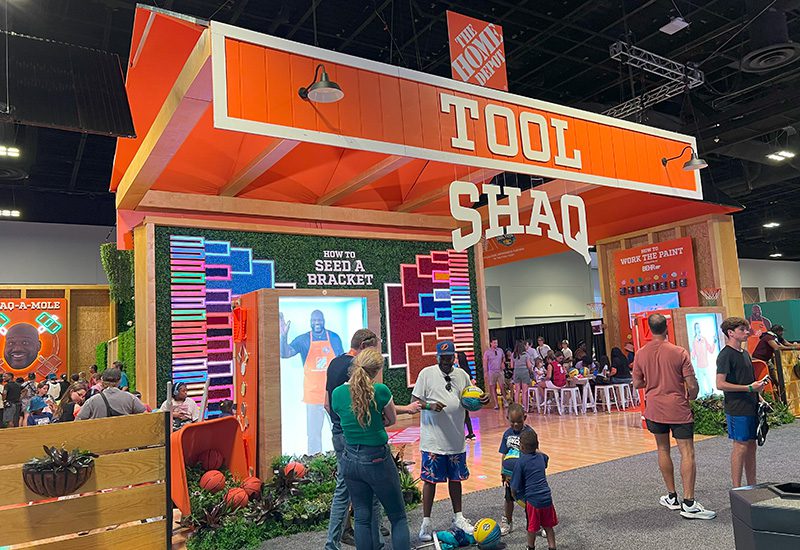
Support for Host City Community Initiatives
Beyond their fan activations, sponsors got behind several Tampa-focused community events and organizations. For every basket made at AT&T’s dream court, the brand donated $10 to Boys & Girls Clubs of Tampa Bay and Human-I-T. Outside Tourney Town, AT&T presented Connecting Tampa Bay, an invite-only event on April 3 at Hotel Haya for 200 college students selected to take part in a panel discussion and mentoring series with industry leaders.
The NCAA and Dove teamed up with the Tampa Bay Local Organizing Committee to refurbish an indoor playing court at the Riverfront Rec Center at Julian B. Lane Riverfront Park. A ceremony in honor of the NCAA Women’s Final Four Legacy Project presented by Dove took place on April 2.
Lastly, the NCAA Read to the Final Four challenged thousands of third-grade students in Tampa with a reading competition that ran through the month of March. The top “Final Four” schools won a field trip to Tourney Town, where the elementary schools and reading champions were recognized on April 4 by the NCAA and Tampa Bay Local Organizing Committee. By the end of the competition, local students read a total of 6,264,228 minutes.
